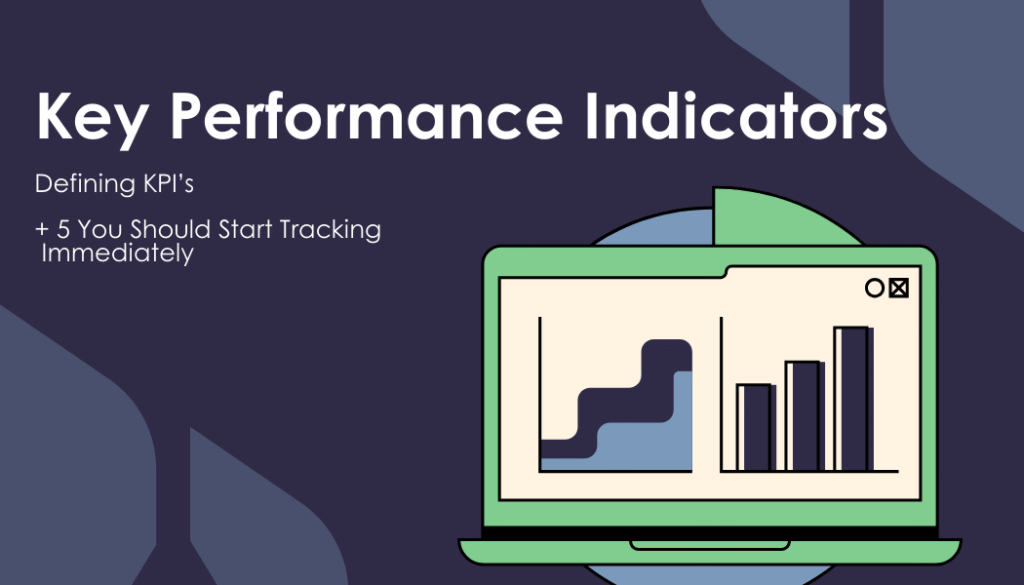
Defining KPIs
KPIs are quantifiable values that indicate how effectively your company is achieving its key business objectives. They provide insight into various areas of your business, such as financial health, customer satisfaction, and operational efficiency. By tracking KPIs, you can make informed decisions, set realistic goals, and drive growth.
Why KPIs Matter
KPIs are crucial because they help you:
- Monitor Progress: Track how well you’re meeting your goals and objectives.
- Identify Trends: Spot patterns and trends in your business performance.
- Make Data-Driven Decisions: Base your decisions on objective data rather than gut feelings.
- Set Benchmarks: Compare your performance against industry standards or past performance.
For small business owners, having a clear understanding of your KPIs can be the difference between thriving and struggling. With that in mind, let’s explore five essential KPIs that you should start tracking immediately.
1. Revenue Growth Rate
What It Measures: The Revenue Growth Rate measures the percentage increase in your revenue over a specific period.
Why It Matters: Tracking revenue growth helps you gauge the overall health and expansion of your business. A consistent increase in revenue indicates that your business is growing, while stagnation or decline may signal potential issues that need addressing.
How to Track It:
- Calculate the difference between your revenue for two periods (e.g., month-over-month or year-over-year).
- Divide the difference by the revenue of the initial period.
- Multiply by 100 to get the percentage growth rate.
2. Customer Acquisition Cost (CAC)
What It Measures: CAC calculates the average cost of acquiring a new customer.
Why It Matters: Understanding CAC helps you evaluate the efficiency of your marketing and sales strategies. If your CAC is too high compared to the revenue generated from each customer, you might need to adjust your approach to ensure profitability.
How to Track It:
- Add up all marketing and sales expenses over a specific period.
- Divide the total cost by the number of new customers acquired during that period.
3. Customer Lifetime Value (CLV)
What It Measures: CLV estimates the total revenue a business can expect from a single customer throughout its relationship with your company.
Why It Matters: CLV helps you understand the long-term value of your customers and informs decisions on how much you can afford to spend on acquiring new customers. A high CLV indicates strong customer loyalty and satisfaction.
How to Track It:
- Calculate the average purchase value.
- Determine the average purchase frequency.
- Multiply these values by the average customer lifespan.
4. Gross Profit Margin
What It Measures: Gross Profit Margin shows the percentage of revenue that exceeds the cost of goods sold (COGS).
Why It Matters: This KPI indicates the profitability of your core business activities. A healthy gross profit margin suggests that your business is efficiently producing and selling products or services.
How to Track It:
- Subtract COGS from total revenue to find gross profit.
- Divide the gross profit by total revenue.
- Multiply by 100 to get the percentage.
5. Net Promoter Score (NPS)
What It Measures: NPS assesses customer satisfaction and loyalty by asking how likely customers are to recommend your business to others.
Why It Matters: NPS provides insights into customer sentiment and can predict business growth. A high NPS indicates a strong, positive relationship with your customers, while a low score suggests areas for improvement.
How to Track It:
- Survey your customers and ask them to rate their likelihood of recommending your business on a scale from 0 to 10.
- Subtract the percentage of detractors (score 0-6) from the percentage of promoters (score 9-10).
Conclusion
Start tracking these KPIs today to gain a clearer picture of your business’s strengths and areas for improvement. With a solid grasp of your key metrics, you’ll be better equipped to make strategic decisions, optimize operations, and achieve your business goals.
About The Author
Are you learning to navigate Quickbooks but need a little help? James Wegener, the CEO of The QuickBooks Guy, LLC, is here to guide you every step of the way. With over 20 years of experience in bookkeeping and a deep understanding of financial software solutions, James is the go-to expert for those seeking to optimize their financial operations.
Don’t let bookkeeping challenges hold you back any longer. Reach out today at 678-923-5904 or drop an email to TheQuickBooksGuy@gmail.com.
It’s time to get your books done right!




